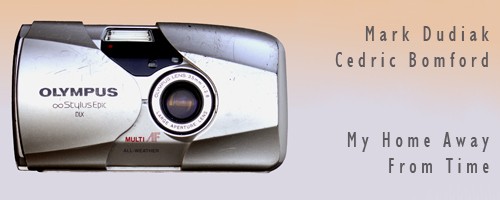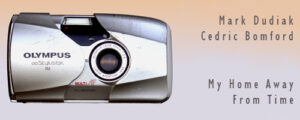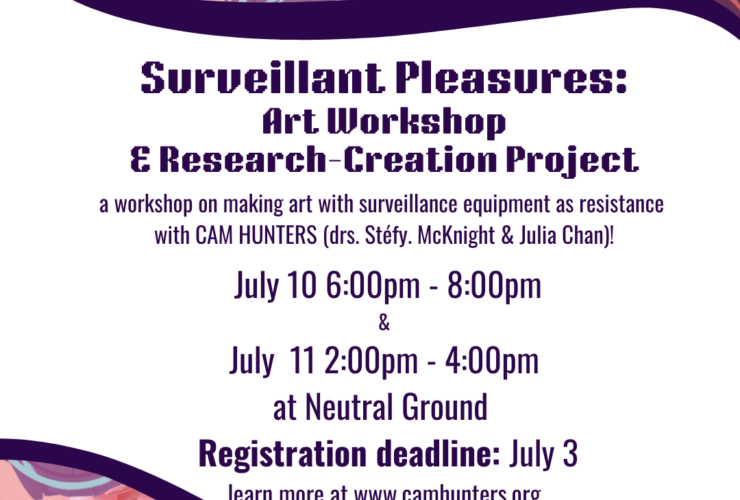Mark Dudiak & Cedric Bomford
August 26 – October 6, 2006
Opening Reception
Saturday August 26, 8:00 pm
Fleshy Media
Like many young artists before him, Mark Dudiak and his collaborator, Cedric Bomford, create new work with an overview to evacuating all extraneous discourse, context, critical analysis and historical reference marks from their practice at the outset. The purpose of this willful act can be said to purge the vagaries of professional decorum added by curators and critics of contemporary art exhibitions in a cathartic act of defiance that has been the hallmark of young geniuses since the advent of Modernism. Instead, the artists wish to focus our attention on the processes they engage as collaborators with a view to opening up new discourses that have come about current to relational aesthetics and interactivity.
To be able to keep up appearances becoming of a gallery director/curator and yet afford the young artists their privilege, I feel I must at least dress up in a black leather jacket and write the critical text after midnight from my home sofa while looking at pictures of loved ones and well in advance of the upcoming exhibition. In this way, I hope to fulfill my personal desires for love and attention by things surrounding me that are personal and specific to me and keep my opinions about the artists and their work, objective and not about my needs and desires to become credited with knowing something that would in turn make me more special than the artist. In the new world of relational aesthetics, we seek to find a role for the artist in the service-based economy as one who creates not objects or events, but, situations and as one who belongs quite happily in a service-based economy.
The problem in writing about a new work is further complicated in this project since their aesthetic strategy has been to respond to eachother’s process in a kind of double blind experiment where key aspects of the process remain hidden, even to the artists themselves. The problem of writing about this new piece of art then will be to settle upon a relationship between the art object and its text and between the artist and curator and the antagonisms that proceed from each of these new encounters. I have not long agonized over this dilemma; I am fully prepared to adopt the role of the submissive collaborator in the hierarchical relationship that ensues between the artist and curator in an institutional or organizational framework. In terms of creating new propositions, I agree that the institution should take a leadership role in this unstable relationship in the context of the processes being undertaken by the artists in their quest to open up new readings and new potentialities for the viewer when confronted or presented with an intimate/subjective yet scientific/rational piece of art. In other words, how unstable and mutable can the relationship between the art and the viewer actually be if the curator and the institution are locked in to their roles as characters in possession of the outcomes intended but not for all to see? More than anything else, someone has to take the first step towards creating an atmosphere of trust amidst the antagonism.
In previous work, Dudiak directly challenges the aspirations of the new relational aesthetics which value the potential of the artwork to inspire new creative opportunities for the viewer as an encounter with an art experience or object. In particular, Dudiak exposes a concern about the status of the contemporary art practice that fulfils a semi-functional role in society as one who is caring for an adolescent intent on experimenting with their sexuality knowing that the experiments must take place but that if certain unwritten codes are damaged, the life of the adult will be ultimately compromised.
The situation that Mark Dudiak and his enigmatic collaborator Cedric Bomford have created for themselves commemorates yet another layer of this network of trust and instability in so far as they are creating a new photo-based, cinematic work through a collaborative team relationship where neither partner sees the other’s work until the creative process is complete. In this way, they fully contemplate the potentiality of open-ended work and work in progress, work that is investigative in nature, experimental and work that challenges the boundaries of an otherwise exhausted medium by changing the conditions under which the work is conceived and thereby relieving the constraints and unleashing what exists beyond the art historical references of mechanical reproduction.
Brenda Cleniuk, Director



